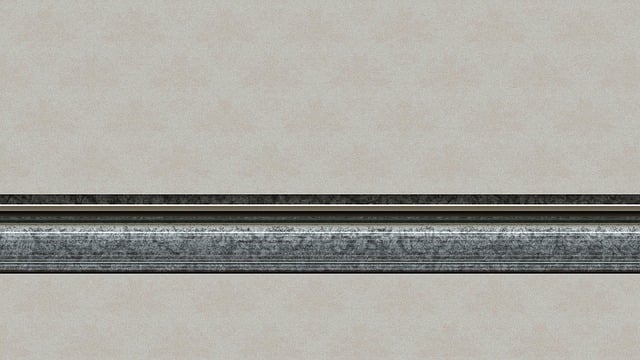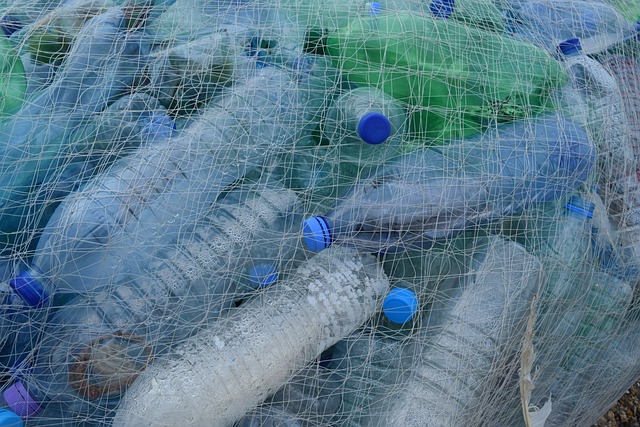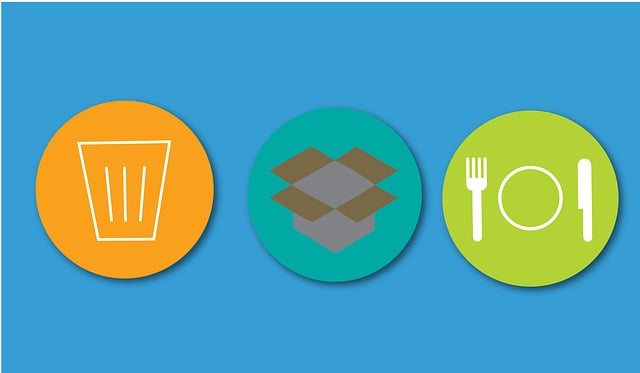Injection molding is a key manufacturing technique for creating precise, consistent parts with excellent surface finishes. The process involves injecting molten plastic into a mold, where it cools and solidifies into the desired shape. Factors like plastic type, heating temperature, injection pressure, and mold design significantly affect the quality of the surface finish. To ensure high-quality output, critical parameters such as melt temperature, injection speed, holding pressure, and cooling time are carefully controlled. This precision allows for tight dimensional tolerances and superior surface quality, making injection molded parts suitable for a wide range of applications across various industries.
Part design plays a crucial role in achieving these high-quality finishes; optimal design choices include strategic gate placement, wall thickness distribution, and draft angles to facilitate part removal and manage cooling times. Advanced design software helps simulate the injection molding process, allowing engineers to identify and correct potential design flaws before production, enhancing both aesthetic and functional integrity of the parts.
Material selection is also vital; thermoplastics like ABS, PC, and PETG are chosen for their strength, clarity, and ease of processing, as well as their thermal and chemical resistance. These materials ensure a smooth surface finish across complex geometries. Precise control over process parameters such as mold temperature, injection pressure, and cooling rate is essential to prevent defects like warping or sink marks.
Post-molding techniques such as sanding, buffing, and polishing are used to refine the surface quality by removing imperfections. Buffing involves using fine grits to smooth surfaces, leading to a high-quality finish. Polishing then imparts a reflective shine. Coatings and surface treatments like electroplating not only enhance visual appeal but also protect parts from wear and environmental factors. These post-molding processes are indispensable for industries where both performance and a high-quality surface finish are critical, including automotive, medical, and electronics sectors. Injection molding's precision and efficiency make it an integral part of modern manufacturing, enabling the production of parts with superior finishes that meet stringent quality standards.
Injection molding stands as a cornerstone in manufacturing, renowned for its capacity to produce complex parts with precision and efficiency. This article delves into the critical aspects of ensuring smooth surface finishes on these intricate products. We will explore the pivotal role of part design, the significance of material selection, and the optimization of process parameters. Furthermore, post-molding techniques will be examined as vital steps to refine the surfaces for exceptional quality. Join us as we dissect the intricacies of achieving flawless finishes in injection molding, a testament to the meticulous artistry and scientific precision involved in this industry.
- Understanding Injection Molding and Its Role in Achieving Smooth Surface Finishes
- The Importance of Part Design for Optimal Smoothness in Injection Molded Products
- Material Selection: Key Factors for Ensuring a Flawless Finish in Injection Molding
- Process Parameters Optimization for Consistent High-Quality Surface Finishes
- Post-Molding Techniques to Refine and Perfect the Surface of Injection Molded Parts
Understanding Injection Molding and Its Role in Achieving Smooth Surface Finishes

Injection molding is a prominent manufacturing process that plays a pivotal role in the production of parts and products with precise and consistent shapes and finishes. This technique involves the use of a machine to inject molten material into a mold, where it cools and hardens to assume the desired form. The smoothness of the surface finish in injection molding is influenced by several factors, including the type of plastic used, the temperature at which the plastic is heated, the pressure applied during injection, and the design of the mold itself. The control over the material’s flow and filling of the mold allows for fine-tuning of the part’s dimensional accuracy and surface quality.
The process begins with the heating of thermoplastic resin to a liquid state, which is then forced under high pressure into a chilled metal mold. The mold’s precision design ensures that the molten material fills every detail accurately, resulting in a part with tight tolerances and a smooth surface finish. After the plastic cools and solidifies, the finished part is ejected from the mold. Throughout the injection molding process, parameters such as melt temperature, injection speed, holding pressure, and cooling time are carefully controlled to optimize the quality of the final product. This meticulous management of the production parameters is essential for achieving a smooth surface finish that meets or exceeds design specifications. The result is a consistent, high-quality part that can be used in a wide range of applications, from consumer goods to complex medical devices. Understanding and mastering injection molding is key to manufacturing parts with superior surface finishes, which are not only aesthetically pleasing but also functional and durable.
The Importance of Part Design for Optimal Smoothness in Injection Molded Products

Injection molding is a robust manufacturing process that produces parts and products with complex geometries and high-precision dimensions. The importance of part design in achieving optimal smoothness cannot be overstated; it is integral to the quality and functionality of injection molded products. Design considerations, such as the incorporation of draft angles, gate locations, and wall thickness distributions, play a pivotal role in facilitating the flow of molten material and ensuring a uniform fill during the molding cycle. Draft angles allow for easy extraction of the finished part from the mold without marring the surface finish. Gate placement is strategic; it must be designed to minimize stress concentrations and unwanted marks or blemishes that can occur where the material solidifies. The distribution of wall thicknesses across the part affects the cooling time and the potential for warping or internal stresses that may compromise the final smoothness. By meticulously planning these aspects, designers can optimize the molding process, leading to a high-quality surface finish that is both aesthetically pleasing and functional.
Furthermore, advanced design software enables engineers to simulate the injection molding process, predicting potential issues with part design and allowing for adjustments before physical prototyping begins. This virtual testing grounds not only saves time and resources but also enhances the accuracy of the final product’s surface finish. The integration of these simulation tools in the early stages of product development is a critical step in ensuring that injection molded parts meet the highest standards of smoothness and quality, thereby fulfilling their intended use effectively and efficiently.
Material Selection: Key Factors for Ensuring a Flawless Finish in Injection Molding

Injection molding is a highly efficient and widely used manufacturing process that produces parts and products by injecting molten material into a mold. Achieving a flawless finish in injection molding hinges significantly on the selection of appropriate materials. The compatibility of the chosen material with the mold’s chemistry and the ability to flow into intricate details without compromising the final product’s integrity are crucial considerations. For instance, thermoplastics like ABS (Acrylonitrile Butadiene Styrene), PC (Polycarbonate), and PETG (Glycol-modified Polyethylene Terephthalate) are commonly employed due to their balanced properties of strength, clarity, and processability. The molecular structure and the thermal and chemical resistance of these materials ensure a smooth surface finish, even with complex geometries. Additionally, the material’s mold temperature, the injection pressure, and the cooling rate must be carefully calibrated to facilitate the optimal flow of the molten material and minimize the risk of defects such as warping, sink marks, or poor surface aesthetics. Proper material selection and process optimization work in tandem to deliver high-quality parts with consistent and smooth surface finishes, which are essential for both functional performance and aesthetic appeal in various applications, from consumer electronics to medical devices.
Process Parameters Optimization for Consistent High-Quality Surface Finishes

Injection molding is a highly technical process that demands precise control over various parameters to achieve consistent high-quality surface finishes. To ensure the integrity and aesthetic appeal of molded products, optimization of process parameters is key. These include the temperature of the injection unit, the melt pressure, the flow rate of the material into the mold, and the cooling time. Each parameter influences the final product’s dimensional accuracy, surface texture, and overall quality. For instance, the injection molding machine must maintain an optimal barrel zone temperature profile to prevent degradation of the polymer or incomplete melting, which can lead to defects such as cold spots, burn marks, or warping post-molding. The flow rate must be carefully calibrated to avoid air entrapments and ensure a uniform fill without stressing the material, which could cause sink marks or a weakened structure. Additionally, the cooling time is critical; it must be balanced to allow the part to solidify without crystallizing too early, which can affect the material’s properties, or too late, which can lead to deformation or internal stresses. Advanced monitoring systems and real-time feedback controls can assist operators in fine-tuning these parameters, leading to a smoother surface finish and enhanced product reliability. By adhering to stringent process parameter optimization, injection molding facilities can consistently produce parts with superior surface finishes that meet or exceed customer expectations and industry standards.
Post-Molding Techniques to Refine and Perfect the Surface of Injection Molded Parts

Injection molding is a highly efficient manufacturing process that produces precision-shaped parts and items, often in large quantities. However, achieving a smooth surface finish on these parts can be challenging due to factors such as material viscosity, cooling rates, and part design intricacies. Post-molding techniques play a pivotal role in refining and perfecting the surface of injection molded parts. One critical technique is the application of secondary operations like sanding, buffing, and polishing. These processes help to eliminate any surface imperfections such as scratches, flow lines, or bubbles that may arise during the initial molding phase. Buffing, for instance, uses abrasive wheels with varying grits to smooth out the part’s surface, followed by finer grits for a high-quality finish. Polishing further enhances the appearance by imparting a reflective shine, often achieving a glass-like appearance that is essential for parts subject to aesthetic scrutiny.
Another significant post-molding technique is the use of coatings and surface treatments. These treatments can include electroplating, painting, or the application of protective films. Electroplating, for example, not only improves the aesthetic appeal but also provides added durability and protection against wear and environmental factors. Coatings can mask minor imperfections while providing a uniform finish that is resistant to scratches, chemicals, or UV light, depending on the coating used. These treatments are particularly useful for parts that require both functionality and a high-quality surface finish, such as those in the automotive, medical, and electronics industries. The choice of technique and material depends on the specific requirements of the part, including its intended use, environmental exposure, and the desired aesthetic qualities. Mastery of these post-molding techniques is crucial for manufacturers aiming to produce injection molded parts with superior surface finishes.
Injection molding stands as a pivotal process in delivering high-quality, smooth surface finishes on a myriad of molded products. This article has elucidated the critical aspects of part design, material selection, and process parameters optimization that are indispensable to achieving these flawless finishes. By meticulously addressing each facet, manufacturers can consistently produce parts with impeccable surfaces, enhancing both functionality and aesthetics. The post-molding techniques discussed further refine the final product, ensuring it meets stringent standards. Ultimately, the culmination of these precise and strategic approaches underscores the sophistication and reliability of injection molding as a manufacturing process.
